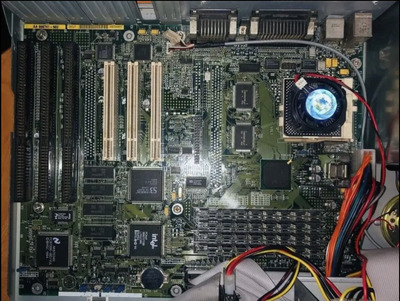First post, by cloverskull
Hey friends!
I have been struggling with a 486 VLB build for a while and am wondering if maybe I should just try a different approach. My ideal is to be able to do DOS gaming from the 386 era on to the early Pentium era. The OSes I'd be interested in are (naturally) DOS, Windows 3.11, and perhaps a separate install of either Win95 or Win98. Or heck, why not both, CF cards are cheap!
I'm pretty Socket 7 ignorant and there seems to be a lot of info to take in, so if I may ask for a bit of advice here. I appreciate the help. I've been doing research on my own but honestly would prefer to solicit the most up to date advice possible 😀
As far as motherboard is concerned, I'd like to find something that has a coin cell battery, has multiple PCI and ISA slots (ideally 3 or 4 each!), onboard ps2 mouse/keyboard. Something with a decent build quality and a layout that doesn't put the CPU right under where a long PCI or ISA card would go, thus rendering those slots useless.
Also, I don't really have much knowledge in the way of cache on these machines, or ideal RAM configurations, so advice there is also appreciated.
For graphics, I was thinking S3 virge...any reasons why I should look elsewhere? I have a W98 machine with a Voodoo card so unless there's some substantial reason why a similar GPU setup would be of unique value here, I am leaning toward 3d acceleration probably not being completely necessary.
For sound, was thinking Orpheus II. Any other sound options make sense?
Thanks!
